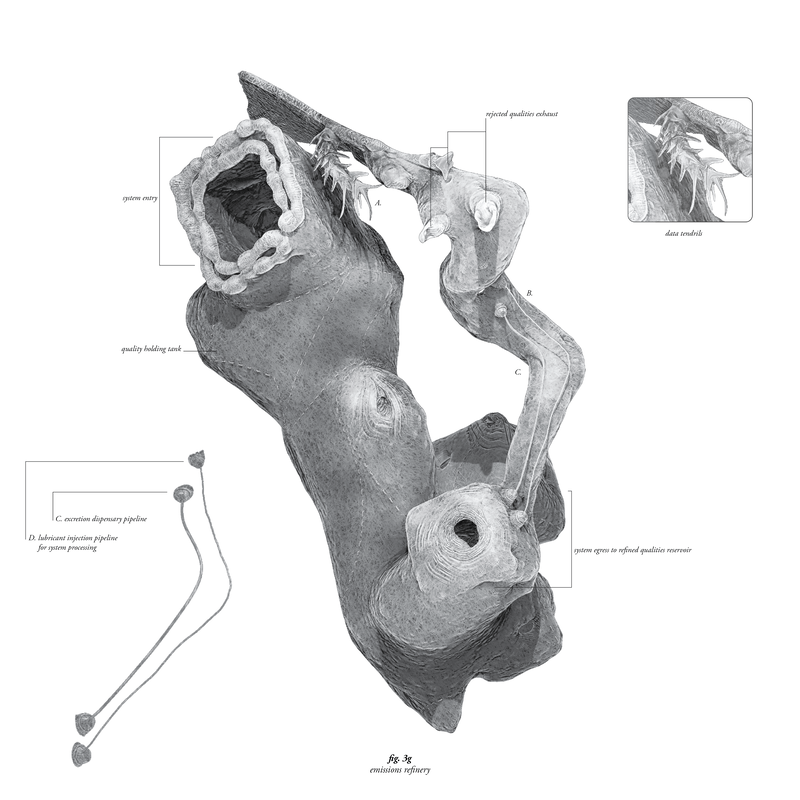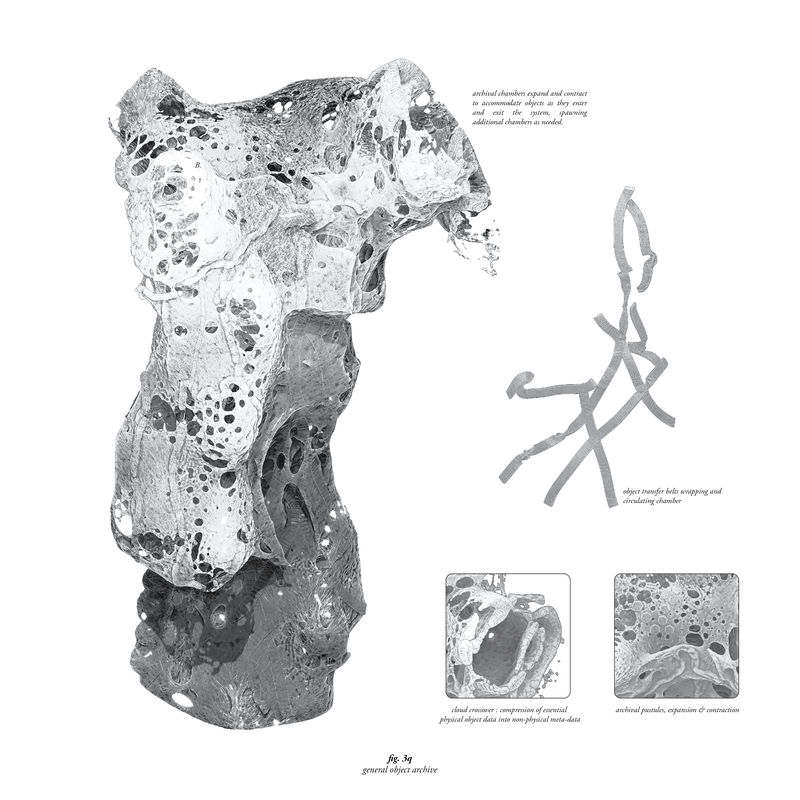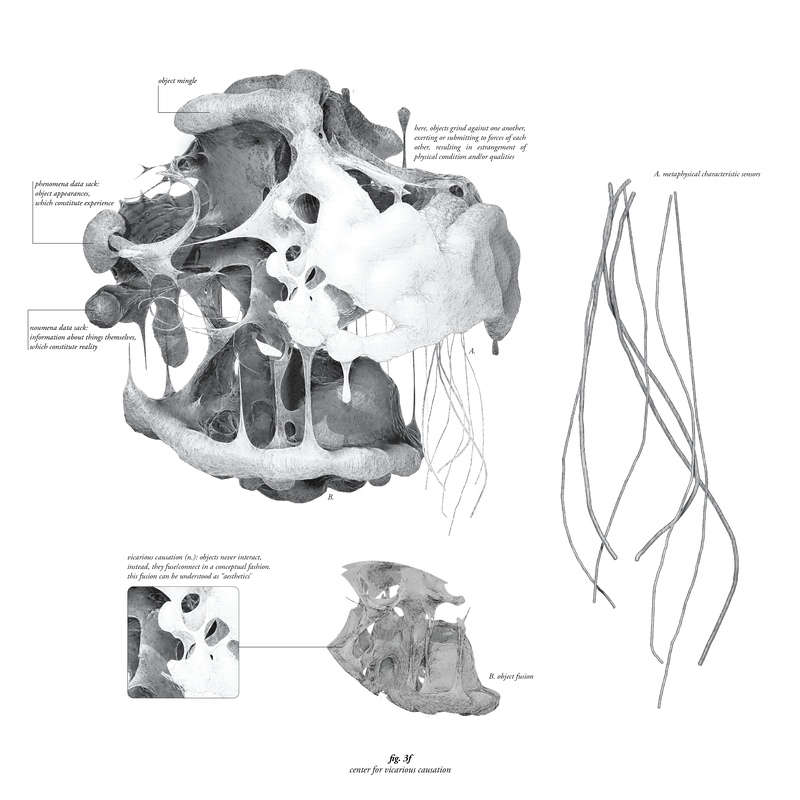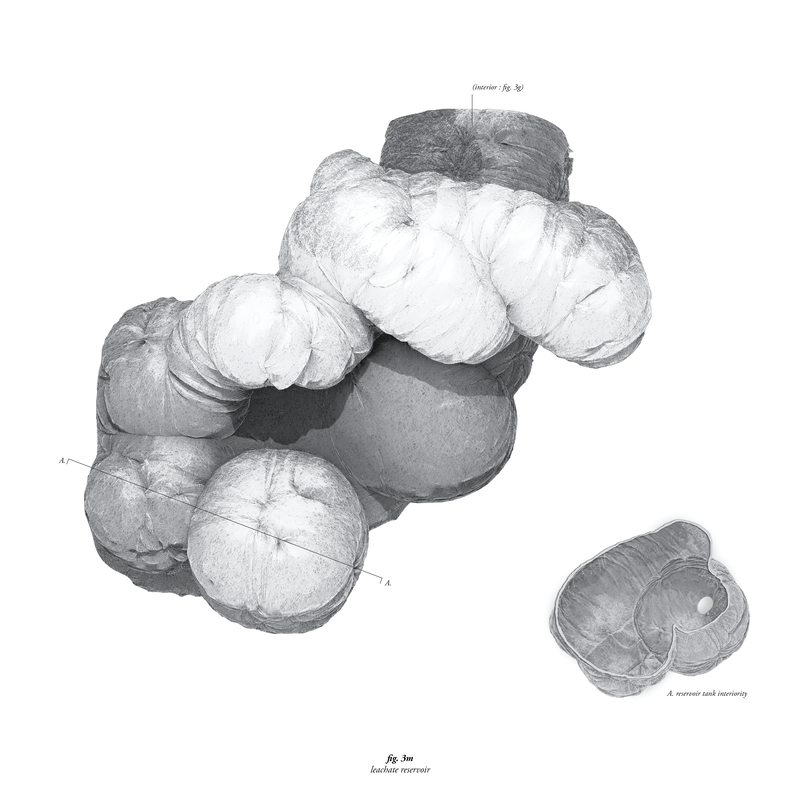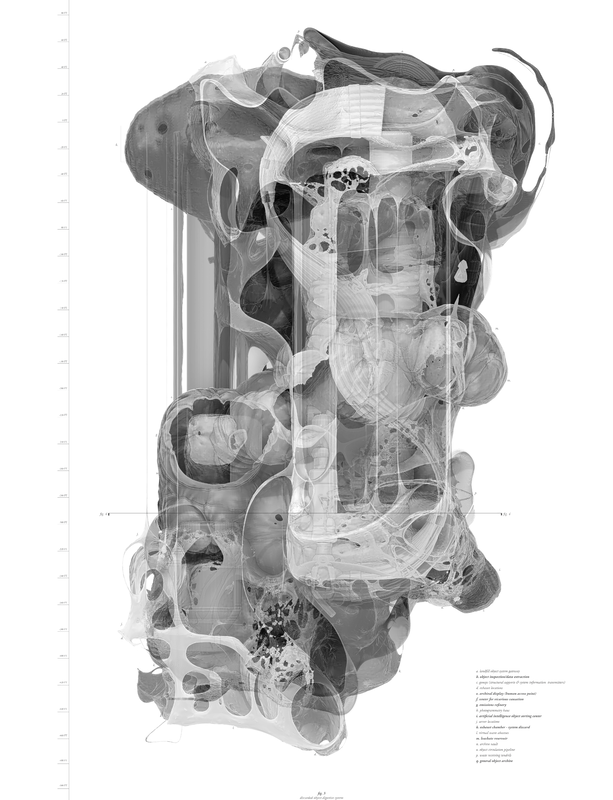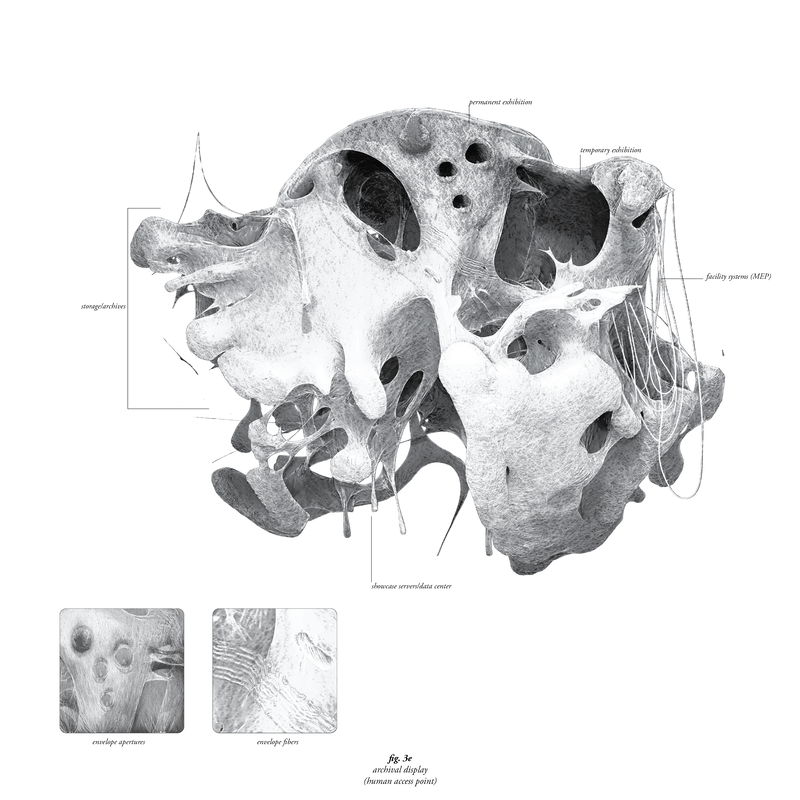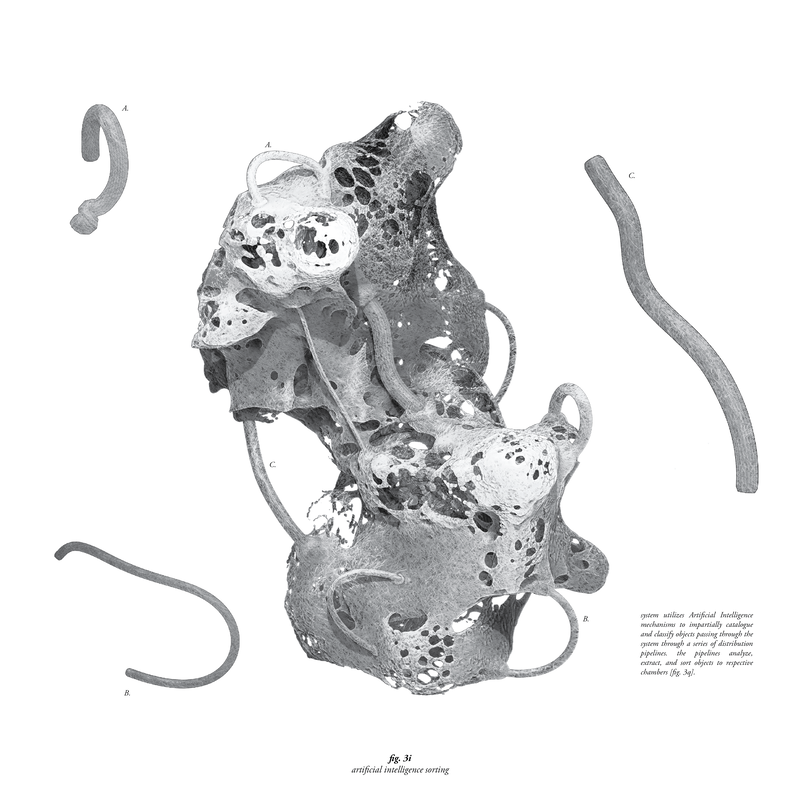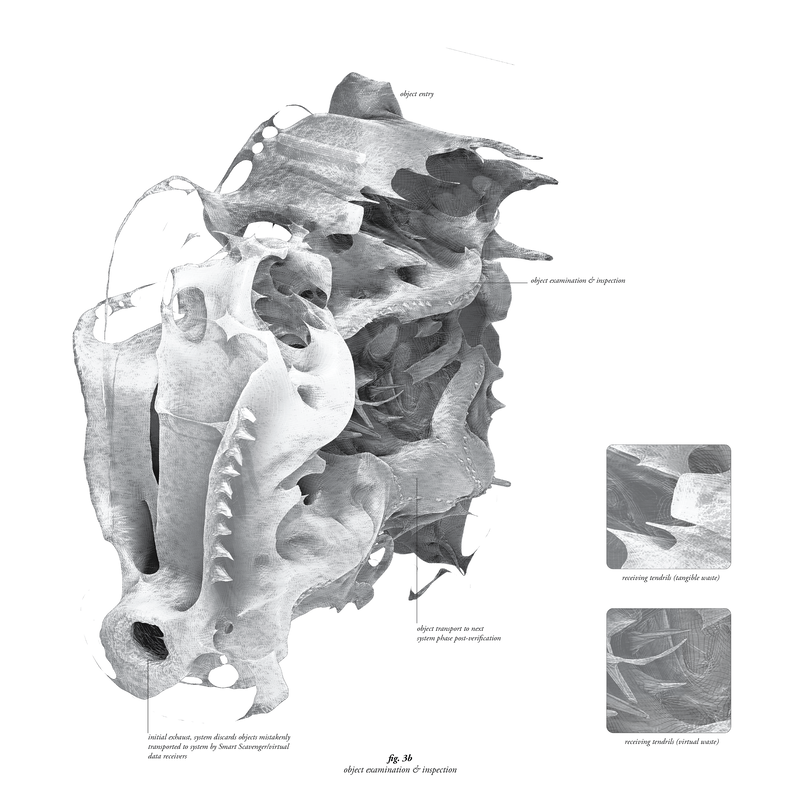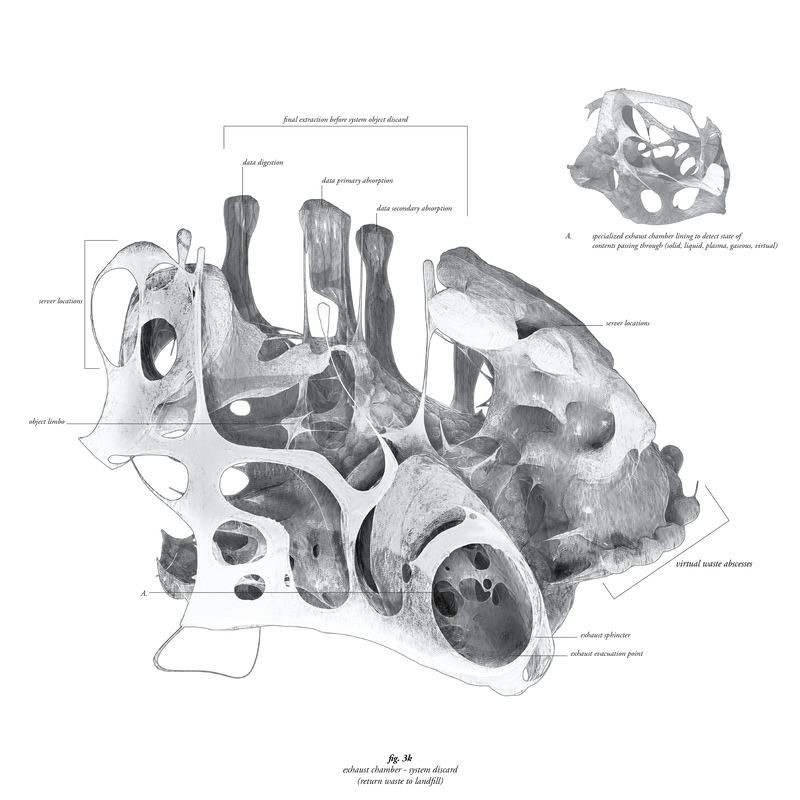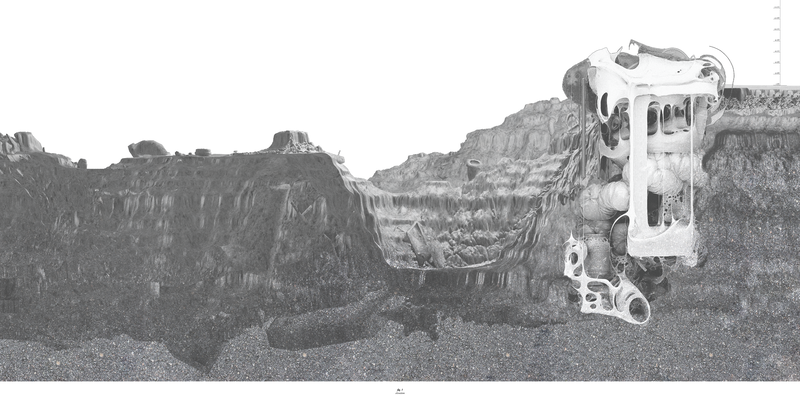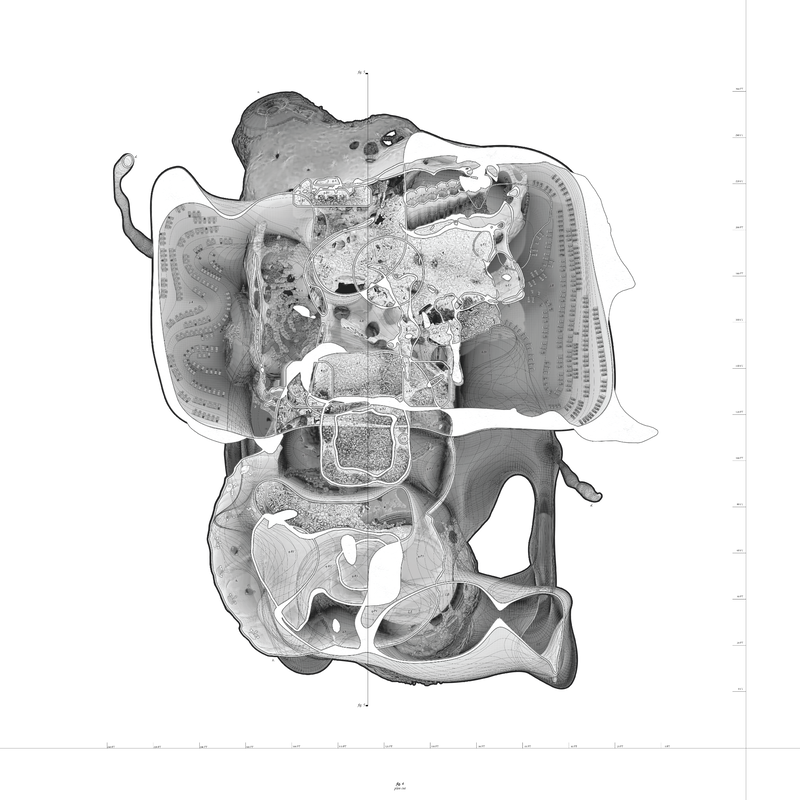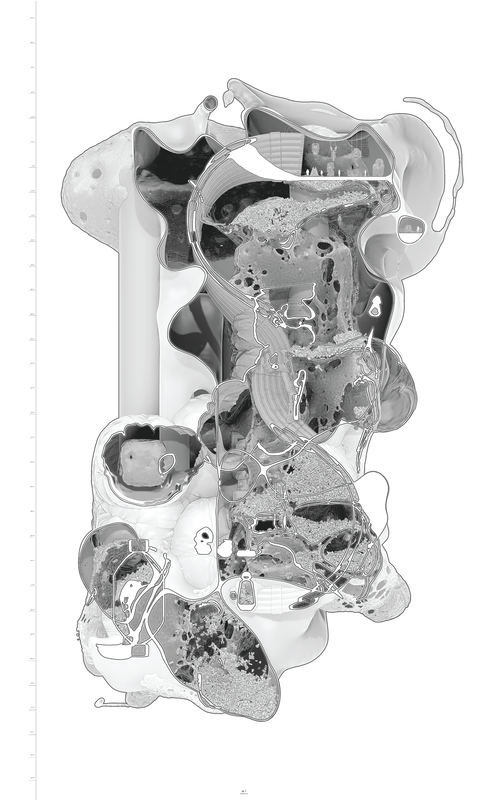G.o.o.o.p.
GARBAGE-OBJECT ORIENTED ONTOLOGICAL PROCESSOR
FOURTH YEAR STUDIO—TEXAS A&M UNIVERSITY
SPRING 2019 (MID)
INSTRUCTORS: GABRIEL ESQUIVEL + JORIS PUTTENEERS
COLLAB : CYNTHIA CASTRO + JEANNELLE FERNANDEZ + ALEJANDRA VALDOVINOS
FOURTH YEAR STUDIO—TEXAS A&M UNIVERSITY
SPRING 2019 (MID)
INSTRUCTORS: GABRIEL ESQUIVEL + JORIS PUTTENEERS
COLLAB : CYNTHIA CASTRO + JEANNELLE FERNANDEZ + ALEJANDRA VALDOVINOS
introduction
The proposed Garbage-Object Oriented Ontology Processor, otherwise known as G.O.O.O.P., invades the territory of the landfill by inserting a parasitic Artificial Intelligence driven Object-Oriented digestive system for discarded objects to call for an architectural intervention into an infrastructure that traditionally did not belong to architecture.
this research considers three main objectives:
First, the implementation of Artificial Intelligence within the system both externally and internally. Externally, as a “smart-scavenger,” in service of the G.O.O.O.P., responsible for extracting objects from the landfill and delivering them to the system. Internally, A.I. is distributed throughout the digestive system as an object evaluation and sorting mediator.
Second, the research asserts that implementation of artificial intelligence into a system such as the landfill sustains architectural agency by demanding an architectural presence and consideration within an infrastructure that traditionally is not expressed architecturally.
Lastly, the project adopts formal strategies of estrangement to develop a series of digestive chambers responding to their intended functions.
more on the G.O.O.O.P.
The landfill, a collection of broken tools and abandoned objects considered unworthy of human attention compose an ecosystem considered less than picturesque by human bias at surface level but each object within contains infinite layers of meta-data waiting to be digested. As Timothy Morton asserts, “the fantasy we have regarding trash lies in that it disappears and dissolves.” The implementation of an Artificial Intelligence-driven waste digestive system contests this fantasy by flattening the hierarchy in which we position garbage objects against ourselves through unbiased data collection, extraction, and archiving within the landfill territory. By integrating the impartial sorting capabilities of AI into the post-human life for an object, the real object becomes more accessible in order to acknowledge the intrinsic value broken tools contain.
The system operates parasitically with the help of “Smart Scavengers,” A.I.-driven dumpster-divers that search, select, and extract objects it considers essential from the landfill to transport to the G.O.O.O.P. for organizing, optimizing and archiving.
In addition to the physical waste collected from the pre-existing ecosystem of the landfill, non-physical waste is channeled to the waste management center by pre-existing data collection mediums such as cookies, search history or lack thereof, surveillance, census data, etc. Examples of nonphysical waste include but are not limited to websites that have not been visited in years, cultural trends that have died, ideas that have failed, outdated ideological or theological practices, music that has never been heard, online shopping items that have never been purchased, etc.
Physical and non-physical objects grind slowly against each other, shedding and absorbing sensual qualities from each collision. The system negotiates leachate and emissions as the residue of the sensual qualities objects excrete in pursuit of discovering the essence of things. The system collects data in order to trace an object’s origins, life cycle, descendants, ancestors, emotional baggage, memories, and regimes in which the object belonged to. Archived information about objects overtime can “reveal the manner in which objects reflect social structures or movements”. This data is stored within the system in both data servers and archival displays that are available for human interaction and observation.
form + program
Any relation between two objects generates a new object by vicarious causation which Harman explains as the fusion and connection of objects in a conceptual fashion rather than a literal interaction. This fusion can be understood as “aesthetics’ or the way in which things understand other things. Kit-collision of objects belonging to different ontologies produces an ontological estrangement where objects fuse as they exchange leachate, implications, emissions, imprinting, etc. The outcome of these estrangements generated the object library that underwent an additional process of algorithmic estrangement which can be best understood here.
The resulting forms of these series of estrangements were utilized for the aggregation of the functional chambers that make up the Digestive System of the G.O.O.O.P. Containing all of these digestive chambers is an active membrane represented as poche. This membrane operates functionally by assuming the position of object protection and regulation.
As diagrammed, the program of the aggregated functional chambers are as follows:
The proposed Garbage-Object Oriented Ontology Processor, otherwise known as G.O.O.O.P., invades the territory of the landfill by inserting a parasitic Artificial Intelligence driven Object-Oriented digestive system for discarded objects to call for an architectural intervention into an infrastructure that traditionally did not belong to architecture.
this research considers three main objectives:
First, the implementation of Artificial Intelligence within the system both externally and internally. Externally, as a “smart-scavenger,” in service of the G.O.O.O.P., responsible for extracting objects from the landfill and delivering them to the system. Internally, A.I. is distributed throughout the digestive system as an object evaluation and sorting mediator.
Second, the research asserts that implementation of artificial intelligence into a system such as the landfill sustains architectural agency by demanding an architectural presence and consideration within an infrastructure that traditionally is not expressed architecturally.
Lastly, the project adopts formal strategies of estrangement to develop a series of digestive chambers responding to their intended functions.
more on the G.O.O.O.P.
The landfill, a collection of broken tools and abandoned objects considered unworthy of human attention compose an ecosystem considered less than picturesque by human bias at surface level but each object within contains infinite layers of meta-data waiting to be digested. As Timothy Morton asserts, “the fantasy we have regarding trash lies in that it disappears and dissolves.” The implementation of an Artificial Intelligence-driven waste digestive system contests this fantasy by flattening the hierarchy in which we position garbage objects against ourselves through unbiased data collection, extraction, and archiving within the landfill territory. By integrating the impartial sorting capabilities of AI into the post-human life for an object, the real object becomes more accessible in order to acknowledge the intrinsic value broken tools contain.
The system operates parasitically with the help of “Smart Scavengers,” A.I.-driven dumpster-divers that search, select, and extract objects it considers essential from the landfill to transport to the G.O.O.O.P. for organizing, optimizing and archiving.
In addition to the physical waste collected from the pre-existing ecosystem of the landfill, non-physical waste is channeled to the waste management center by pre-existing data collection mediums such as cookies, search history or lack thereof, surveillance, census data, etc. Examples of nonphysical waste include but are not limited to websites that have not been visited in years, cultural trends that have died, ideas that have failed, outdated ideological or theological practices, music that has never been heard, online shopping items that have never been purchased, etc.
Physical and non-physical objects grind slowly against each other, shedding and absorbing sensual qualities from each collision. The system negotiates leachate and emissions as the residue of the sensual qualities objects excrete in pursuit of discovering the essence of things. The system collects data in order to trace an object’s origins, life cycle, descendants, ancestors, emotional baggage, memories, and regimes in which the object belonged to. Archived information about objects overtime can “reveal the manner in which objects reflect social structures or movements”. This data is stored within the system in both data servers and archival displays that are available for human interaction and observation.
form + program
Any relation between two objects generates a new object by vicarious causation which Harman explains as the fusion and connection of objects in a conceptual fashion rather than a literal interaction. This fusion can be understood as “aesthetics’ or the way in which things understand other things. Kit-collision of objects belonging to different ontologies produces an ontological estrangement where objects fuse as they exchange leachate, implications, emissions, imprinting, etc. The outcome of these estrangements generated the object library that underwent an additional process of algorithmic estrangement which can be best understood here.
The resulting forms of these series of estrangements were utilized for the aggregation of the functional chambers that make up the Digestive System of the G.O.O.O.P. Containing all of these digestive chambers is an active membrane represented as poche. This membrane operates functionally by assuming the position of object protection and regulation.
As diagrammed, the program of the aggregated functional chambers are as follows:
- center for vicarious causation
- general object archive
- leachate reservoir
- emissions refinery
- object examination and inspection
- artificial intelligence sorting
- exhaust chamber
- archival display
